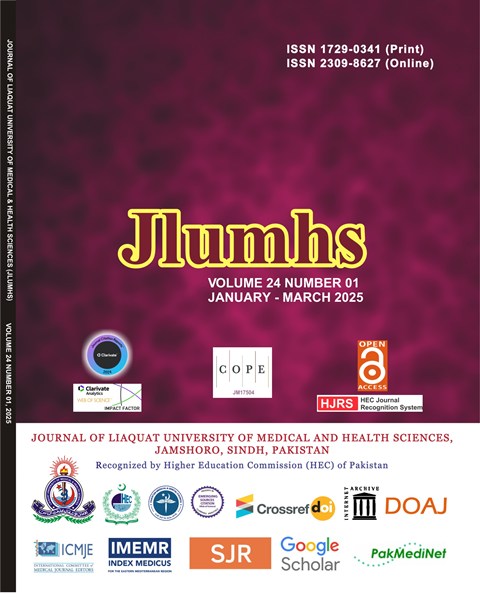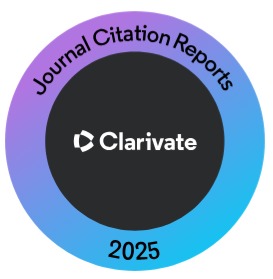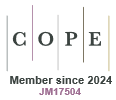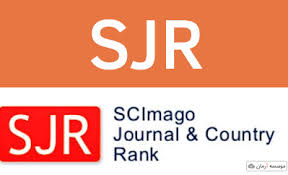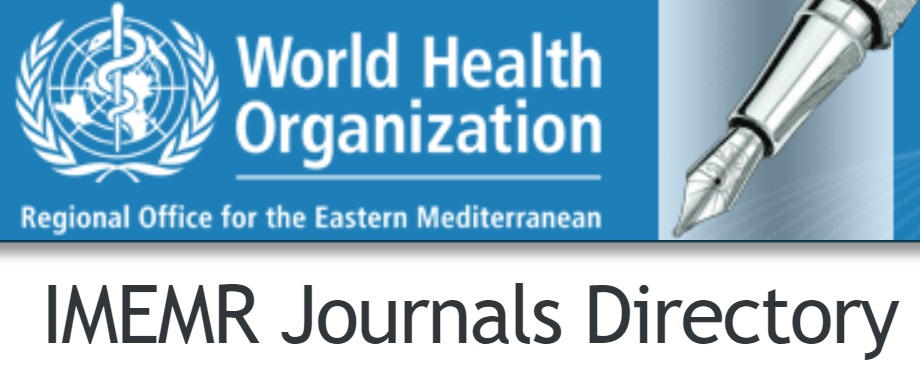Associated Factors with the Implementation of Patient Safety Culture in Hospital
Keywords:
Organizational Culture, Regulation of Patient Safety, Patient Safety, Quality Management, Safety, PatientsAbstract
OBJECTIVE: To identify factors associated (i.e., organizational culture, patient safety regulation, patient safety management quality) with implementing a patient safety culture in hospitals.
METHODOLOGY: Quantitative research was used with a cross-sectional approach. All 219 nurses working in inpatient wards of a hospital in Banda Aceh were conveniently included in this study using a non-probability convenience sampling technique with some inclusion and exclusion sample criteria. Data were collected from 18 to 28 April 2024 using the Organizational Culture Assessment Instrument (OCAI), the Karen-personnel instrument for managing the QPSM, the Hospital Survey on Patient Safety for assessing patient safety culture, and a questionnaire comprising questions based on existing literature for evaluating patient safety regulations. Data analysis involved Pearson correlation and multiple linear regression by SPSS 26 for Windows.
RESULTS: There was a relationship between organizational culture (p < .0001, r2 = 0.659), patient safety regulation (p < .0001, r2 = 0.423), and quality management of patient safety (p < .0001, r2 = 0.442) and patient safety culture. The results of the multiple linear regression analysis indicated that higher levels of organizational (p < .0001) and regulatory culture (p < .0001) were associated with a higher patient safety culture among nurses in the hospital's nursing wards.
CONCLUSION: Implementing a hospital patient safety culture is associated with the organizational and regulatory culture levels. Organizational and Regulatory Culture Hospitals are encouraged to foster a positive organizational culture ensuring a comfortable and secure working environment and providing training opportunities for nurses to enhance patient safety practices.
References
Carvalho REFLd, Bates DW, Syrowatka A, Almeida I, Sousa L, Goncalves J et al. Factors determining safety culture in hospitals: a scoping review. BMJ Open Quality. 2023; 12(4): e002310.
Pérez-Toribio A, Moreno-Poyato AR, Lluch-Canut T, El-Abidi K, Rubia-Ruiz G, Rodríguez-López A et al. The Nurse-Patient Relationship in Nursing Documentation: The Scope and Quality of Interactions and Prevalent Interventions in Inpatient Mental Health Units. J Nurs Manag. 2024; 2024: 1-8.
Wilson RM, Michel P, Olsen S, Gibberd RW, Vincent C, El-Assady R et al. Patient safety in developing countries: retrospective estimation of scale and nature of harm to patients in hospital. BMJ. 2012; 344: e832.
Dhamanti I, Leggat S, Barraclough S, Rachman T. Factors contributing to under-reporting of patient safety incidents in Indonesia: leaders' perspectives. F1000Research. 2022; 10: 367.
Mudayana AA, Sari N, Rusmitasari H, Fatonah S, Setyaningsih DA. The Implementation of Patient Safety in Indonesia. Adv Health Sci Res. 2019; 18: 96-102.
Lee SE, Scott LD, Dahinten VS, Vincent C, Lopez KD, Park CG. Safety Culture, Patient Safety, and Quality of Care Outcomes: A Literature Review. West J Nurs Res. 2017; 41(2): 279-304.
Ismail A, Khalid SNM. Patient safety culture and its determinants among healthcare professionals at a cluster hospital in Malaysia: a cross-sectional study. BMJ Open. 2022; 12(8): e060546.
Yusuf M. Penerapan Patient Safety Di Ruang Rawat Inap Rumah Sakit Umum Daerah Dr. Zainoel Abidin Patient Safety Implementation In Ward Of Dr. Zainoel Abidin General Hospital. J Ilmu Keperawatan. 2017; 5(1): 1-6.
Yuswardi Y, Boonyoung N, Thiangchanya P. Head Nurses' Management Regarding Patient Safety in Public Hospitals Aceh Province, Indonesia. Idea Nursing Journal. 2015; VI: 77-82.
Julianto R, Thiangchanya P, Boonyoung N. Nurses' Patient Safety Competencies in Aceh Province, Indonesia. J Nursing. 2014; 4.
Mentari PI, Rachmah. Pentingnya Pengetahuan Perawat untuk Mencegah Medicaion Administration Errors di Rumah Sakit Aceh. J Ilm Mhs Fak Keperawatan. 2017; 1(1): 1-5.
Luengo-Martínez C, Paravic-Klijn T, Burgos-Moreno M, López-Espinoza MÁ. Transcultural adaptation of the Karen Personal instrument to measure the nurses' perception of healthcare quality in hospitals. Enfermería Clínica (English Edition). 2019; 29(3): 146-54.
Sorra J GL, Streagle S. AHRQ Hospital Survey on Patient Safety Culture: User's Guide. (Prepared by Westat, under Contract No. HHSA290201300003C). AHRQ Publication No. 15-0049-EF (Replaces 04-0041). Rockville, MD: Agency for Healthcare Research and Quality. January 2016. Available from: http://www.ahrq.gov/professionals/quality-patient-safety/patientsafetyculture/hospital/ index.html.
Tadesse Bogale A, Debela KL. Organizational culture: a systematic review. Cogent Business & Management. 2024; 11(1): 2340129.
Silva L, Caldas C, Fassarella C, Souza P. Effect of the Organizational Culture for Patient Safety in the Hospital Setting: A Systematic Review. Aquichan. 2021; 21: 1-16.
Wieke Noviyanti L, Ahsan A, Sudartya TS. Exploring the relationship between nurses' communication satisfaction and patient safety culture. J Public Health Res. 2021; 10(2).
Oikonomou E, Carthey J, Macrae C, Vincent C. Patient safety regulation in the NHS: mapping the regulatory landscape of healthcare. BMJ Open. 2019; 9(7): e028663.
Seo J-K, Lee SE. Effects of Nurses' Perceptions of Patient Safety Rules and Procedures on Their Patient Safety Performance: The Mediating Roles of Communication about Errors and Coworker Support. J Nurs Manag. 2023; 2023(1): 2403986.
Vu TV, Vo-Thanh T, Nguyen NP, Nguyen DV, Chi H. The COVID-19 pandemic: Workplace safety management practices, job insecurity, and employees' organizational citizenship behavior. Safety Science. 2022; 145: 105527.
Shestopalova TN, Gololobova TV. Standard operating procedures as a trend in ensuring healthcare safety. Health Risk Analysis. 2018; 2018: 129-37.
Akpinar A, Tas Y, Isci E. The Effects of Quality Management System on Patient Safety Culture in Hospitals Hastanelerde Kalite Yönetim Sisteminin Hasta Güvenli?ine Etkisi. Siyaset, Ekonomi ve Yönetim Ara?t?rmalar? Dergisi. 2016; 4: 239-54.
Karaca A, Akin S, Harmanci A. The Relationship Between Perceived Quality of Care and the Patient Safety Culture of Turkish Nurses. J Nurs Res. 2022; Publish Ahead of Print.
Ayuso Murillo D, Andrés Gimeno Bd, Noriega Matanza C, López Suárez RJ, Herrera Peco I. Gestión de la calidad, un enfoque directivo para la seguridad del paciente / Quality management, a directive approach to patient safety Enferm clín (Ed impr) Jul.-ago. Graf. 2017; 27(4): 251-255.
Abdelaliem SMF, Alsenany SA. Factors Affecting Patient Safety Culture from Nurses' Perspectives for Sustainable Nursing Practice. Healthcare. 2022; 10(10): 1889.
Beyene Shashamo B, Endashaw Yesera G, Girma Abate M, Estifanos Madebo W, Ena Digesa L, Chonka Choramo T. Patient safety culture and associated factors among nurses working at public hospitals in Gamo Zone, Southern Ethiopia. BMC Health Serv Res. 2023; 23(1): 670.
Telaumbanua JP, Dachi R, Sinaga J, Hidayat W, Silitonga E. Factors influencing the implementation of patient safety culture in Mitra Sejati Hospital, Medan City in 2022. Science Midwifery. 2023; 10(6): 4619-27.
Downloads
Published
How to Cite
Issue
Section
License
Copyright (c) 2025 Journal of Liaquat University of Medical & Health Sciences

This work is licensed under a Creative Commons Attribution-NonCommercial-ShareAlike 4.0 International License.
Submission of a manuscript to the journal implies that all authors have read and agreed to the content of the undertaking form or the Terms and Conditions.
When an article is accepted for publication, the author(s) retain the copyright and are required to grant the publisher the right of first publication and other non-exclusive publishing rights to JLUMHS.
Articles published in the Journal of Liaquat University of Medical & health sciences are open access articles under a Creative Commons Attribution-Noncommercial - Share Alike 4.0 License. This license permits use, distribution and reproduction in any medium; provided the original work is properly cited and initial publication in this journal. This is in accordance with the BOAI definition of open access. In addition to that users are allowed to remix, tweak and build upon the work non-commercially as long as appropriate credit is given and the new creations are licensed under the identical terms. Or, in certain cases it can be stated that all articles and content there in are published under creative commons license unless stated otherwise.

